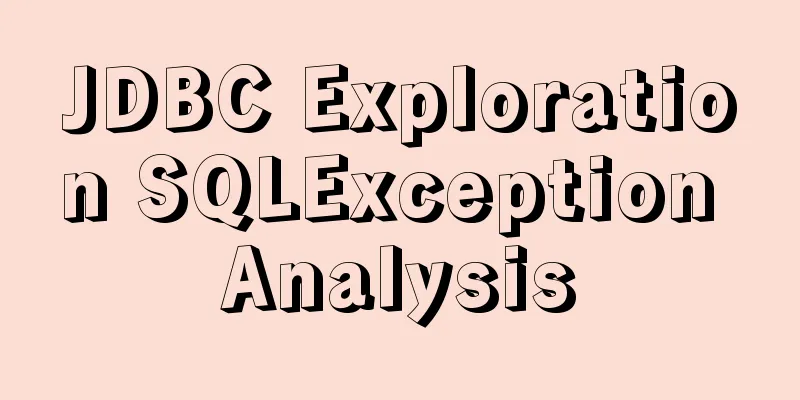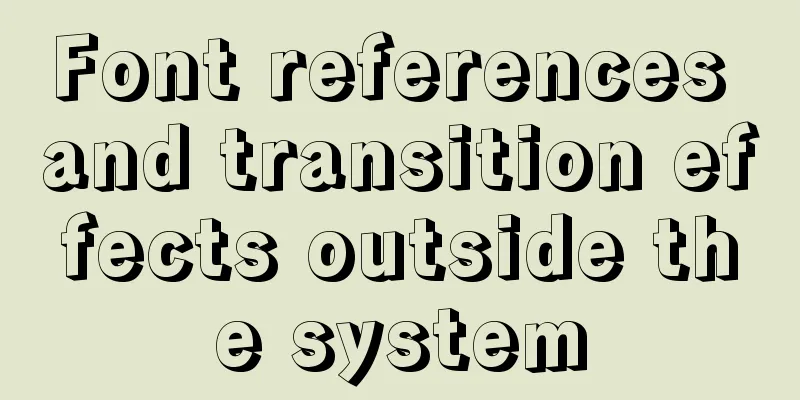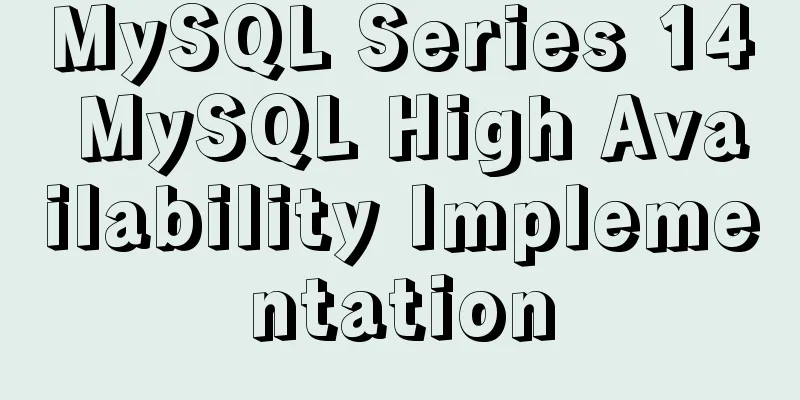JDBC Exploration SQLException Analysis

|
1. Overview of SQLException When an error occurs when using JDBC to interact with a data source (the data source in this article represents the database we actually use), an exception named SQLException will be thrown. A SQLException contains the following information to help us better locate the error. The error indicates: Use the getMessage method to get it. SQLState Code The code consists of five letters and numbers. Most of the codes are standardized by ISO/ANSI and the Open Group (X/Open), but there are still some codes implemented by database vendors themselves. Use the getSQLState method to obtain it. Error Code Unlike SQLState, error codes are integer values defined by the database provider, with the possibility of actual error codes returned by the underlying data source. Use the getErrorCode method to obtain it. Cause Indicates the cause of the exception. By continuously calling the getCause method, you can get the underlying cause of the exception. Exception Chain If multiple errors occur, the exceptions are referenced through this chain. Use the getNextException method to get it. 2. SQLException Example
public static void printSQLException(SQLException e){
for(Throwable e :ex){
if (e instanceof SQLException){
if (ignoreSQLException(((SQLException)e).getSQLState()) == false) {
e.printStackTrace(System.err);
System.err.println("SQLState: " + ((SQLException)e).getSQLState());
System.err.println("Error Code: " + ((SQLException)e).getErrorCode());
System.err.println("Message: " + e.getMessage());
Throwable t = ex.getCause();
while(t != null){
System.out.println("Cause : " + t);
t = t.getCause();
}
}
}
}
}
public static boolean ignoreSQLException(String sqlState){
if(sqlState == null){
System.out.println("The SQL state is not defined");
}
// X0Y32: Jar file already exists in schema
if (sqlState.equalsIgnoreCase("X0Y32")) {
return true;
}
// 42Y55: Table already exists in schema
if(sqlState.equalsIgnoreCase("42Y55")){
return true;
}
return true;
}Note: The above code is taken from [http:docs.oracle.com] (http://docs.oracle.com/javase/tutorial/jdbc/basics/sqlexception.html). 3. SQLWarning SQLWarning is a very important subclass of SQLException, used to indicate warnings that occur during database access. As an exception, a SQLWarning does not stop the execution of the application, but rather alerts the user that nothing is happening as planned. For example, a warning might notify you that an attempt to revoke a permission was unsuccessful, or inform you that an error might have occurred while requesting a disconnect. SQLWarning may be reported by Connection, Statement (including PreparedStatement and CallableStatement) or ResultSet. These classes all have a getWarnings method. Only by calling this method can you see the first warning reported on the calling object. If getWarning returns a warning, we can call its getNextWarning method to get the next warning. Each time a line of statements is executed, the warning of the previous line of statements will be cleared, which means that if we want to retrieve the warnings from the report processing, we must retrieve it before the next line of statements is executed. DataTruncation is the most common warning, with SQLState code 01004, indicating problems when reading or writing data. DataTruncation has many methods that help us understand which column or parameter data is truncated, whether the truncation is in the read or write operation, how many bytes should be transferred and how many bytes are actually transferred. 4. Other types of SQLException BatchUpdateException: Thrown when an error occurs during a batch update operation, in addition to the provided message, all statements that were killed before the error occurred are killed with the provided update count. SQLClientInfoException: Thrown when one or more client information properties cannot be set on a connection. In addition to the information provided, a list of client information properties that are not set is also provided. so on... Summarize The above is all the content of this article about SQLException parsing in JDBC exploration. I hope it will be helpful to you. Interested friends can continue to refer to this site: Summary of Common JDBC Interfaces, Code Examples of Using JDBC to Implement Data Access Object Layer (DAO), etc. If you have any questions, you can leave a message at any time. The editor will reply to you in time. Everyone is welcome to leave a message for discussion. You may also be interested in:
|
<<: Use pure JS to achieve the secondary menu effect
>>: VMware12.0 installation Ubuntu14.04 LTS tutorial
Recommend
The latest super detailed graphic tutorial of installing Kali Linux on virtual machine VMware
Table of contents 1. Download the system image fi...
Steps to purchase a cloud server and install the Pagoda Panel on Alibaba Cloud
Alibaba Cloud purchases servers Purchase a cloud ...
How to use Maxwell to synchronize MySQL data in real time
Table of contents About Maxwell Configuration and...
A brief discussion on the mysql execution process and sequence
Table of contents 1:mysql execution process 1.1: ...
Explanation of the steps for Tomcat to support https access
How to make tomcat support https access step: (1)...
Detailed explanation of Linx awk introductory tutorial
Awk is an application for processing text files, ...
How to move mysql5.7.19 data storage location in Centos7
Scenario: As the amount of data increases, the di...
In-depth explanation of currying of JS functions
Table of contents 1. Supplementary knowledge poin...
Implement MaterialUI button click animation based on CSS and encapsulate it into a React component
Preface As a heavy user of front-end frameworks, ...
Write a mysql data backup script using shell
Ideas It's actually very simple Write a shell...
Linux solves the problem that Deepin cannot start Google Chrome browser as root user
To solve the problem that Deepin cannot start Goo...
Xftp download and installation tutorial (graphic tutorial)
If you want to transfer files between Windows and...
Teach you how to monitor Tomcat's JVM memory through JConsoler
Table of contents 1. How to monitor Tomcat 2. Jav...
Vue implements a small countdown function
Countdown function needs to be implemented in man...
A quick guide to Docker
Docker provides a way to automatically deploy sof...









